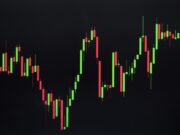May 31, 2025
Every successful investor knows a painful truth: knowing when to sell is often more critical than knowing what to buy.
While financial media overwhelmingly focuses on buying opportunities, our research consistently identifies companies facing significant headwinds that merit serious consideration for selling. These aren’t just stocks underperforming the market; they’re businesses confronting structural challenges, deteriorating fundamentals, or carrying valuations disconnected from financial reality.
What you won’t find here: reactionary calls based on short-term price movements or headline volatility. Each company on this list has been thoroughly analyzed across multiple metrics that historically precede substantial declines.
Smart investors understand that portfolio management requires both addition and subtraction. Sometimes the best investment decision is to redeploy capital away from troubling positions before problems fully materialize in the share price.
This week’s watchlist highlights stocks showing critical weaknesses that demand immediate attention:
Canopy Growth (CGC)
Canopy Growth’s catastrophic 21.64% Friday collapse following an earnings report that can only be described as disastrous demonstrates how quickly a struggling company can crater when fundamentals deteriorate beyond investor tolerance. The Canadian cannabis producer delivered a staggering $1.32 per share loss versus analyst expectations of just $0.20 – a miss of over 500% that sent shockwaves through an already beleaguered sector. This massive disappointment came alongside declining global sales (down 11% in Q4) and persistent negative free cash flow of $36.2 million for the quarter, bringing full-year FCF to negative $176.6 million.
What makes Canopy’s situation particularly concerning is the company’s inability to find any sustainable growth trajectory despite years of restructuring efforts. While management attempted to highlight 4% Canadian sales growth and 13% medical cannabis growth, these modest gains pale in comparison to the 9% full-year revenue decline and accelerating losses. Trading at just $1.34, down from a 52-week high of $8.84, the stock has lost 85% of its value in a year while maintaining a precarious $308 million market capitalization that appears increasingly difficult to justify given the company’s cash burn rate.
The extraordinary trading volume of 13.3 million shares versus the 7.2 million average suggests institutional investors are abandoning positions en masse. Despite management’s promises of eventual positive EBITDA and free cash flow, the trajectory appears to be moving in the opposite direction with accelerating quarterly losses. With a razor-thin 21.33% gross margin providing minimal cushion against further deterioration and no dividend to support the share price, Canopy Growth represents a classic value trap where each earnings report risks triggering additional selling pressure. For investors still holding positions, the combination of structural industry challenges and company-specific execution failures presents a compelling case for immediate exit before the next potential leg down.
Tempus AI (TEM)
Tempus AI faces a credibility crisis following a damning short-seller report from Spruce Point Capital Management that triggered a 13.2% weekly decline and raised fundamental questions about the company’s business practices and financial reporting. The healthcare AI company, which had already suffered a 4% decline the previous week, now confronts serious allegations regarding the integrity of founder Eric Lefkofsky, questionable financial reporting practices, and concerns about the legitimacy of its partnership with AstraZeneca. Spruce Point’s analysis suggests the stock could fall 50-60% from its pre-report levels, implying a target price range of $26.35 to $32.94.
The timing of these allegations is particularly problematic for a company trading at elevated valuations in an increasingly skeptical market environment. At $53.72, down from recent highs but still commanding a $9 billion market capitalization, Tempus AI’s valuation appears vulnerable if the short-seller’s claims gain traction or trigger regulatory scrutiny. The healthcare AI sector has already faced increased investor skepticism about growth prospects and actual revenue-generating capabilities, making companies in this space particularly susceptible to credibility attacks.
While short-seller reports should always be evaluated critically rather than accepted at face value, the specific nature of Spruce Point’s allegations regarding financial reporting and business partnerships creates significant uncertainty for Tempus AI’s near-term prospects. The firm’s track record in identifying problematic situations in the investment management space adds weight to their analysis. With the stock already showing technical weakness and facing potential regulatory or partnership disruptions if the allegations prove substantive, investors should carefully consider whether the risk-reward profile remains attractive. The combination of elevated valuations, credibility questions, and a challenging operating environment for healthcare AI companies suggests a cautious approach is warranted until these issues are resolved.
Cava Group (CAVA)
Cava Group exemplifies the market’s growing intolerance for extreme valuations, even when underlying business performance remains strong. Despite crushing first-quarter expectations with robust double-digit revenue and profitability growth alongside encouraging customer traffic increases, the Mediterranean restaurant chain’s shares declined nearly 13% for the week as investors finally questioned whether the stock’s premium multiples remain sustainable. Trading at a forward P/E ratio of nearly 141 and a price-to-sales ratio approaching 10, Cava’s valuation appears increasingly disconnected from reality when compared to established restaurant operators like Chipotle, which trades at far more reasonable multiples of 42x earnings and 6x sales.
The market’s negative reaction to what should have been celebrated results signals a fundamental shift in investor sentiment toward growth stocks trading at extreme premiums. At $79.68, down from its 52-week high of $172.43, Cava has already experienced significant volatility, yet the current $9 billion market capitalization still appears to price in flawless execution and unlimited growth potential. While the company’s 18.97% gross margin and cautious expansion strategy demonstrate operational discipline, these positives may not be sufficient to justify such extreme valuations in an environment where investors are increasingly focused on valuation metrics.
The concerning aspect of Cava’s recent decline is that it occurred despite strong operational performance, suggesting that even perfect execution may not be enough to support the current share price. Management’s slightly declining restaurant-level profit margins, while not alarming in isolation, become more significant when the stock trades at such elevated multiples that leave no room for disappointment. For investors holding positions, the combination of extreme valuations and growing market skepticism toward premium-priced growth stocks suggests this may be an opportune time to take profits before a potentially more significant correction materializes. While Cava’s long-term prospects may remain intact, the near-term risk-reward profile appears increasingly unfavorable at current valuation levels.
Bottom Line
This week’s featured companies illustrate three distinct types of investment risks that can quickly erode shareholder value: fundamental business deterioration (Canopy Growth), credibility concerns from short-seller attacks (Tempus AI), and unsustainable valuations even amid strong performance (Cava Group). In each case, the market’s reaction suggests investors are becoming more discriminating about risk factors that might have been overlooked during more optimistic periods. Whether facing operational challenges, governance questions, or valuation concerns, these stocks demonstrate how quickly sentiment can shift when underlying vulnerabilities are exposed. For prudent investors, these developments serve as reminders that protecting capital often requires making difficult decisions before problems fully materialize in long-term performance.






